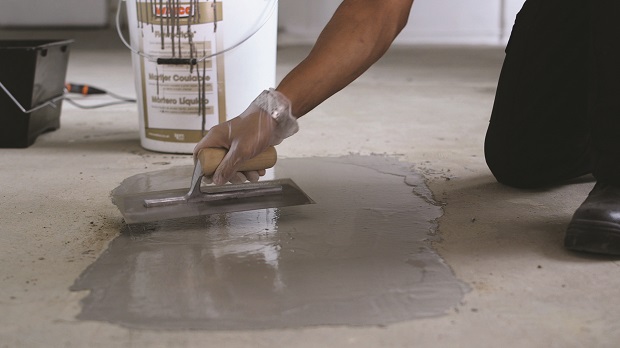Scott Saunders, Senior Technical Sales Advisor, Watco
Warehouses are busy environments and daily traffic from forklifts and pallet trucks, heavy loads being moved around, weighty racking systems and general wear and tear can all adversely affect the state of the concrete flooring. Badly maintained or damaged flooring looks unsightly, and it can contribute to poor productivity, increase housekeeping costs, lead to unnecessary vehicle repairs and present a safety risk to those using the warehouse.
 It is common for companies to ensure that offices provide a pleasant working environment for employees, but many fail to appreciate the importance of doing the same for their warehouses. Instead, they invest in equipment to improve warehouse efficiencies, but if the flooring is in poor condition, these investments could be wasted. Therefore, a concrete floor needs ongoing maintenance, and if damage or deterioration does occur, it should be repaired as soon as possible.
It is common for companies to ensure that offices provide a pleasant working environment for employees, but many fail to appreciate the importance of doing the same for their warehouses. Instead, they invest in equipment to improve warehouse efficiencies, but if the flooring is in poor condition, these investments could be wasted. Therefore, a concrete floor needs ongoing maintenance, and if damage or deterioration does occur, it should be repaired as soon as possible.
 Dangers on the warehouse floor
Dangers on the warehouse floor
According to the latest figures from the HSE1, 45% of non-fatal accidents over the last 3 years in the transport and storage sector (including warehousing), were as a result of slips, trips and falls on the same level. Despite being one of the most common accidents in a warehouse, slips and trips can be easily avoided through common sense and good housekeeping practices. For example, cleaning spills up immediately, utilising warning signs, and keeping routes free of obstructions.
However, concrete flooring hazards can sometimes be trickier to spot. So, what should warehouse managers and employees look out for to prevent accidents and avoid further degradation of the concrete flooring?
Look out for common signs of damage
Concrete flooring is tough, but that does not mean it can’t be damaged. Here are some things to look out for that could indicate that concrete flooring needs to be repaired before the problem escalates.
- Cracks are common on warehouse floors and are usually caused by settlement, structural movement, or impact damage. While a crack is not always a sign of a structural issue, it can widen and develop into a hole or its edges could start to spall at which point it can damage vehicles passing over it.
- Joints are part of the flooring’s structure. They can be bay joints which are created when the concrete is poured over several days, or expansion joints which allow the concrete to expand and contract without cracking, but if the joint edges become exposed, they can start to break away and eventually form a hole.
- Holes can form as a result of surface impact. In heavy traffic areas, the exposed aggregate can pop out of the surface, causing a deeper hole to form which could quickly become hazardous.
If there is serious widespread cracking it will likely warrant an investigation, but for more minor cracks and splits, the floor simply needs repairing to stop the situation worsening and becoming a safety hazard or a costly repair.
Simple steps to maintaining your concrete floor
Always repair the damaged area as soon as you can. If left untreated, the crack, hole or joint could start to chip, break and become larger, causing serious and costly problems. Major repair or replacement of the concrete floor will also have a serious impact on your business as it could result in warehouse downtime.
You can reduce the chances of damage occurring by implementing comprehensive floor and maintenance regimes. These should include dust mopping and wet mopping the floor at least once per week to stop the build-up of dust, debris, chemicals and other contaminants, as well as ensuring your materials handling equipment is in good working order and is not causing damage to the concrete.
You could also consider changing the layout of any machinery or storage units at intervals throughout the year so that the same areas of concrete are not permanently exposed, which helps to protect the flooring further.
Preventative maintenance
Ultimately, prevention is the best approach. Damaged warehouse flooring can affect productivity, health & safety, housekeeping costs, and lead to higher vehicle or repair bills. So, tackle holes, cracks or joint issues as soon as you spot them and don’t let them become a major problem.




Comments are closed.